How to grow vegetables in a time of climate change
A new book on climate resilience will help you garden with confidence as temperatures shift
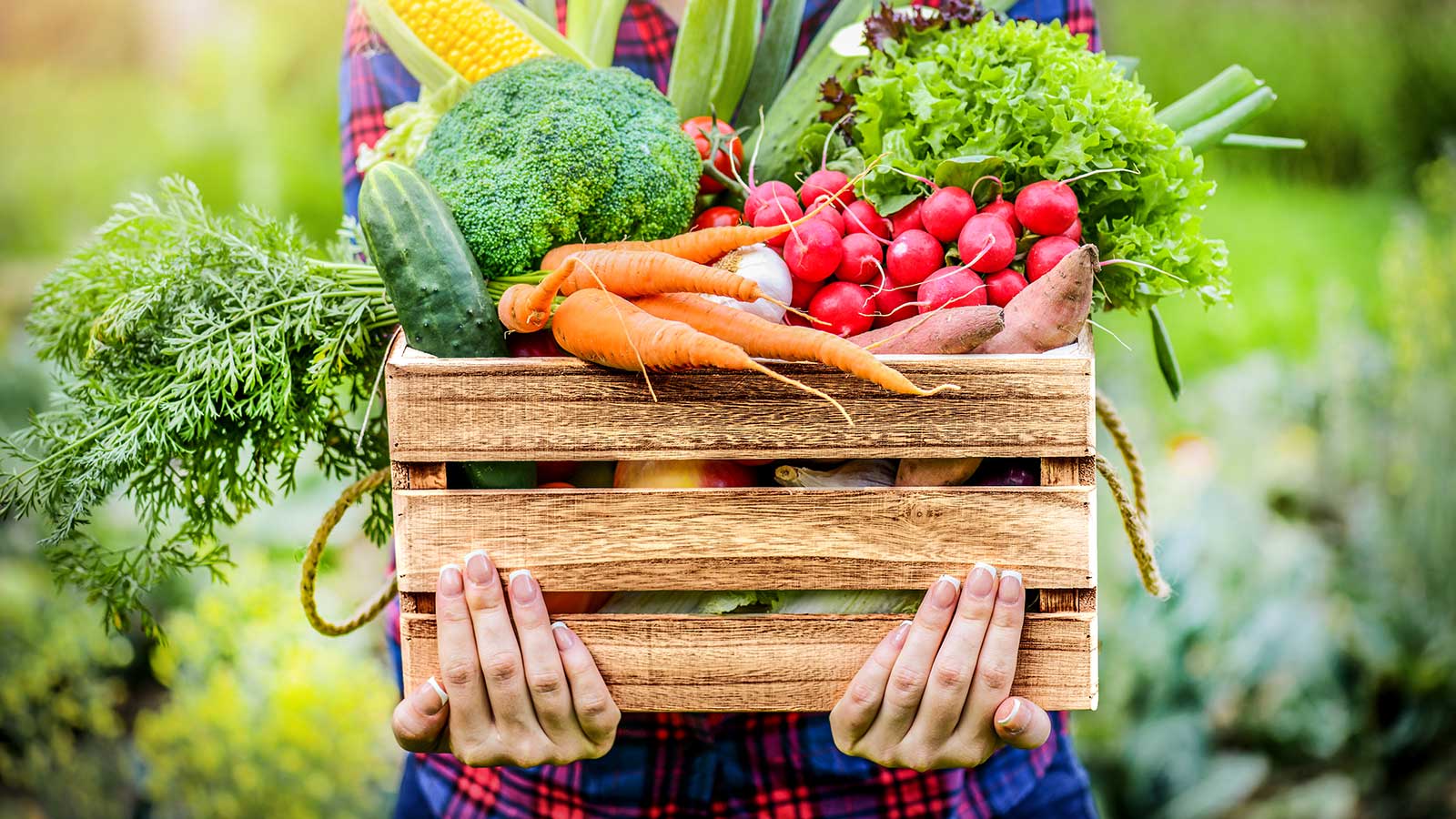

Climate resilience is the latest buzz-phrase in gardening, but what exactly does it mean? And how, as gardeners, can it help us to grow healthy vegetable gardens and choose right plants for the future?
Increasingly, extreme weather conditions - from wildfires and flooding to drought and high winds - mean that crops have been failing globally leading to food shortages and rising prices. Gardening author and magazine editor, Kim Stoddart, says climate resilience means working with nature and using organic methods to create a garden that can stand up to the worst that the extreme effects of climate change can throw at it.
In her latest book The Climate Change Resilient Vegetable Garden - How to Grow Food in a Changing Climate, available on Amazon, Kim explains that we all need to take a closer and more local look at the natural world around us to help our gardens thrive and, by extension, help us to flourish too. We spoke to Kim to find out more about how to grow vegetables in a changing climate, and which crops will thrive.
Climate resilience: The new rules of gardening
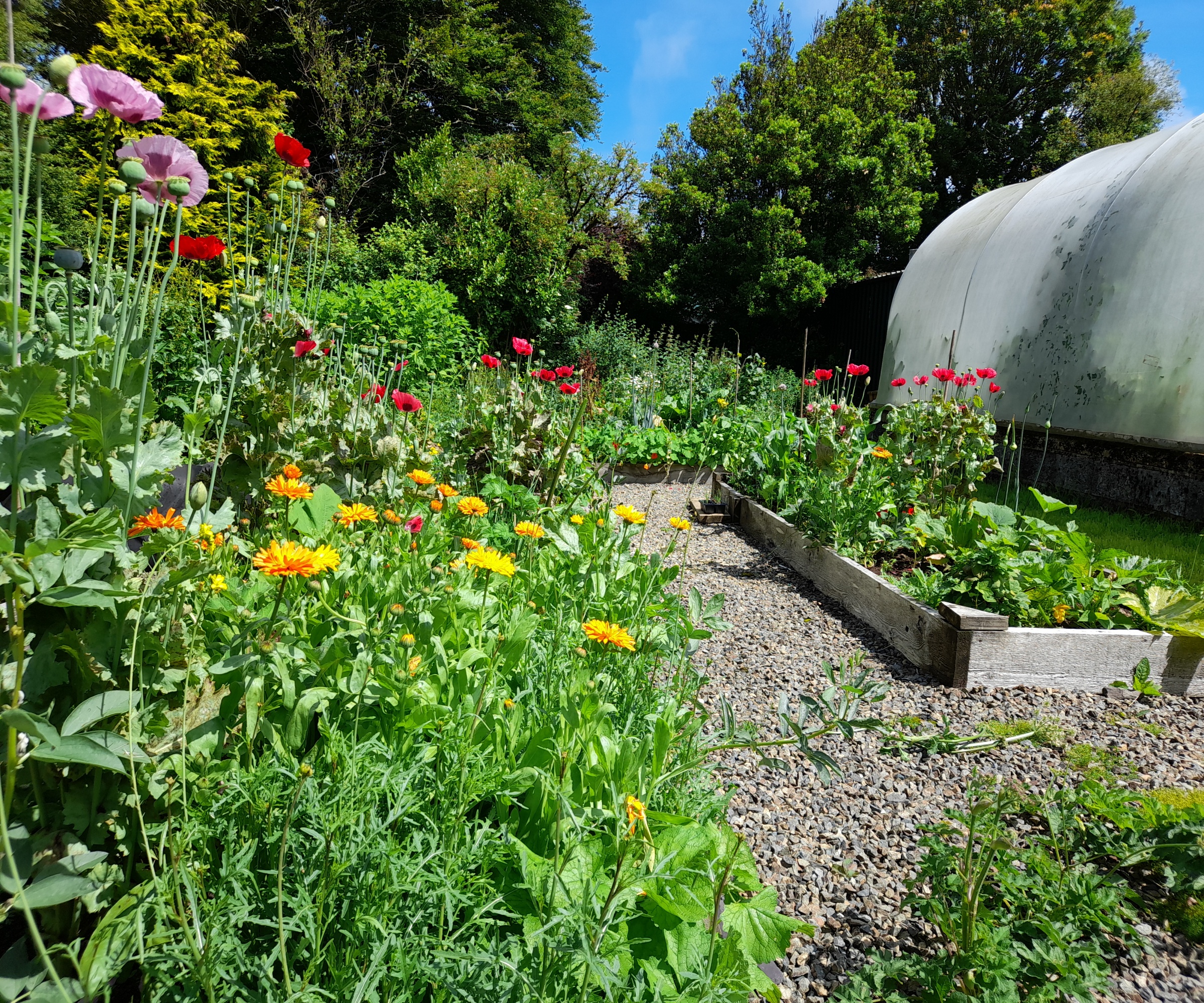
Kim uses gravel paths, raised beds and pollinator-attracting plants to create a thriving climate-resilient garden
Kim, who also wrote The Climate Change Garden, available on Amazon and runs climate resilience gardening courses, says that by setting aside the traditional ‘rules’ of gardening, harnessing the benefits of the natural world, working with local conditions and what you like to grow and eat, you can escape the worst of the climate's destructive forces and save money at the same time.
She explains: 'When it comes to gardening there is no such thing as one size fits all. How you garden and what you grow in your yard depends on where you live, the health of your soil, local weather and your hardiness zone.
'We need to set aside the rulebook and use our innate ability to be able to think on our feet and connect with our own growing space, get to know it intimately and see the challenges it holds. There are so many solutions within the natural world.'
The Climate Change Resilient Vegetable Garden, which has become a best seller in the US and Europe, explains in accessible terms the importance of not being afraid to set aside the rules of traditional gardening, and nurture your yard in the way that works best for you.
Kim says: 'Take seed sowing for example. You read the packet and often the instructions are very exact, plant at a certain depth at a certain time.
'But with the challenging weather we are experiencing more and more, you need to think what should I do to make this work where I’m at now? It might mean succession planting seeds for a longer harvest, or starting them in a different way.
'You also need to consider conditions around the home, think about weather and pests,' Kim continues. 'In the UK, we have had a very mild wet winter and there is a massive issue with slugs, so even though my own gardens are biodiverse with natural predators, I know there will be more slugs so I can't take it for granted that they won’t be an issue.'
How Kim learned climate resilience
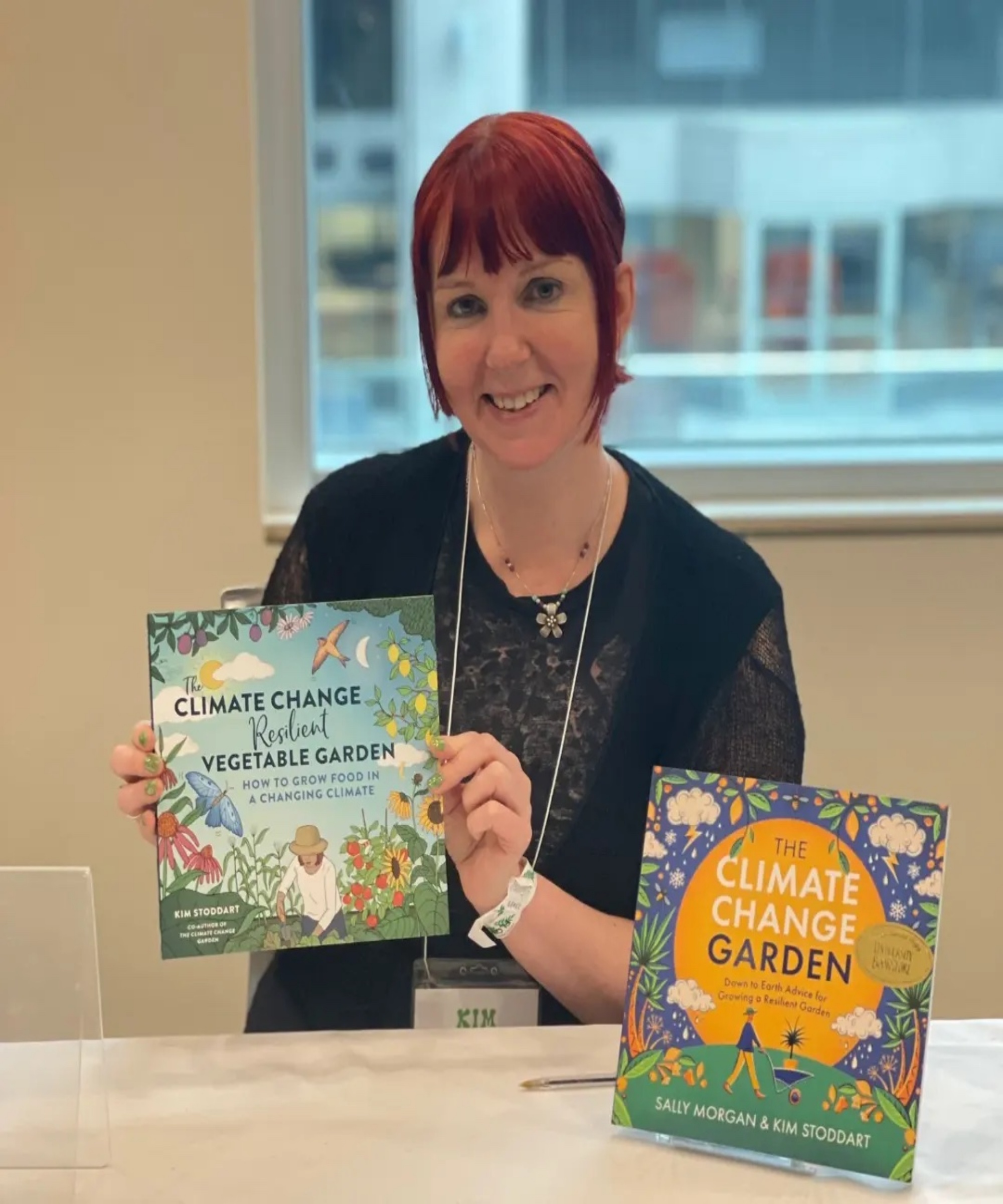
Author Kim Stoddart with her gardening books The Climate Change Resilient Vegetable Garden and The Climate Change Garden
Kim’s gardening knowledge is self-taught, learned the hard way by living 700ft above sea level in blustery West Wales, one of the most climatically battered and exposed places in the UK.
For the past 14 years she has run a smallholding, which initially suffered weeks of flooding, ruining all her crops, but which is also prone to parching when the well that irrigates her land dries up, meaning she had to draw up some drought-tolerant ideas as well.
To combat these extremes, Kim planted hawthorn hedging and created a swale, a ditch filled with plants such as fruit bushes and willows that improve drainage and help soak up water.
She built raised beds so plant roots are safely lifted above saturated ground level and planted a windbreak of damson trees to protect her apple trees. She also laid paths of porous membrane and gravel so she can access her garden in all weathers without compacting and damaging the soil structure.
Finally, she enlisted the help of a farmer neighbour, asking him not to plough the field next door, but leave some grass growing to take up excess water and prevent water and chemical run-off from contaminating her land.
Five tips for climate resilience gardening
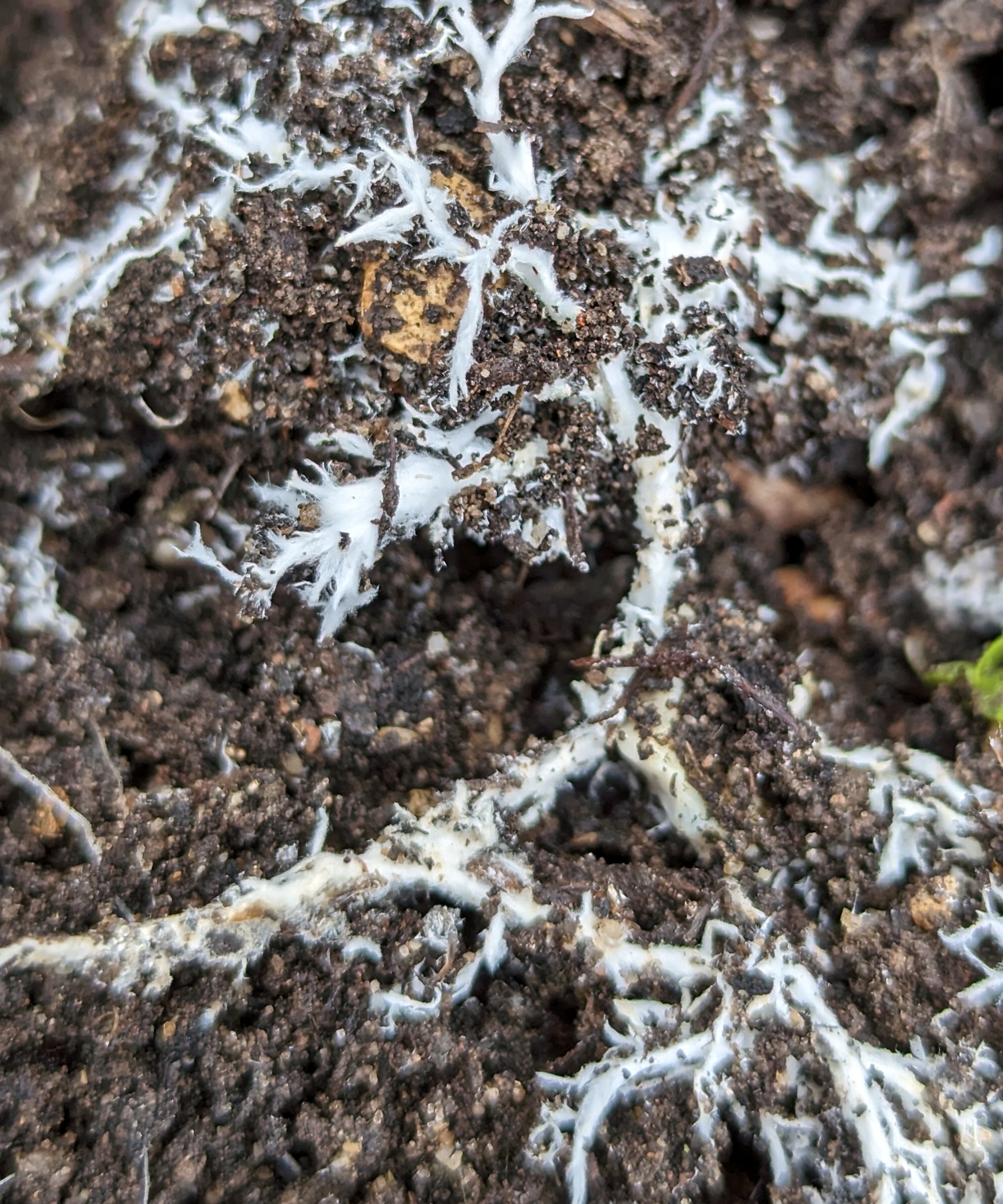
The presence of mycorrhizal fungi and earthworms shows that your soil is in a healthy condition
Having learned climate resilience first-hand, Kim says there are five key factors that need to be taken into account when creating a climate-resilient garden from scratch. They are:
- Look to permaculture and go organic, avoiding pesticides and chemicals and welcoming in as much biodiversity as possible. She stresses that even the effects of products designed to tackle one individual pest or problem will ripple out and create a natural imbalance.
- The second thing to do is feed the earth, whatever your soil type, mulching with well-rotted homemade compost, enriching it naturally, employing a no dig (or no-till) regime to boost the presence of soil heroes - the worms, invertebrates, microbes and mycorrhizal fungi that create natural resilience.
- Her next tip is to grow perennial crops such as fruit bushes and herbs because by doing so you will disturb the soil less than with annuals. She recommends trying chives, thyme, rosemary and fennel, which are all delicious and great for biodiversity - though be careful with mint as it can be invasive.
- Not panicking about pests is another way to create climate resilience. Kim explains: 'Aim to work with the natural world and turn the garden into an eat-and-be-eaten world. Create space for wildlife, with longer grass, wildflower areas, places where wild things can thrive.'
- Finally, Kim recommends using natural resources to make leaf mold, wood chippings and compost, recycling and repurposing everything from plastic bottles to plant pots. This saves the gardener money and lessens demand for manufacturing, creating a lighter burden for the planet.
5 top crops to grow for a climate-resilient garden

'Crystal Lemon' cucumbers are ideal for a climate resilient vegetable garden
So, you have fed your soil, built your raised beds, and are ready to plant and grow - so what should you choose? The obvious answer is to grow what you know you will eat, but there are also five cornerstone crops that Kim thinks everyone should try.
- The first is herbs, especially parsley which is delicious and rich in vitamin C, and bronze and Florence fennel which looks amazing, tastes great and is a great way to attract beneficial wildlife and insects into your yard.
- Pick-and-come-again lettuce such as the variety ‘salad bowl’ is another no-brainer as it crops for a long time, is relatively cold hardy and can even be grown on a windowsill.
- Cherry tomatoes are another winner - Kim lets hers trail through her polytunnels where they root from the stems and crop generously. She says they are less pernickety about feeding and watering than standard tomato plants, meaning they are cheaper and easier to grow.
- Ball-shaped ‘crystal lemon’ cucumbers are another hardy hero that can be grown as ground cover, stay fresh for longer than finger cucumbers, are delicious when fresh and also make delectable pickles.
- Finally, Kim sings the praises of eye-catching nasturtiums, as moisture-saving ground cover, as trap plants (or sacrificial plants) that attract pests before other edible crops, as peppery additions to salads and also as a natural de-wormer for chickens.
Taking a free-spirited approach
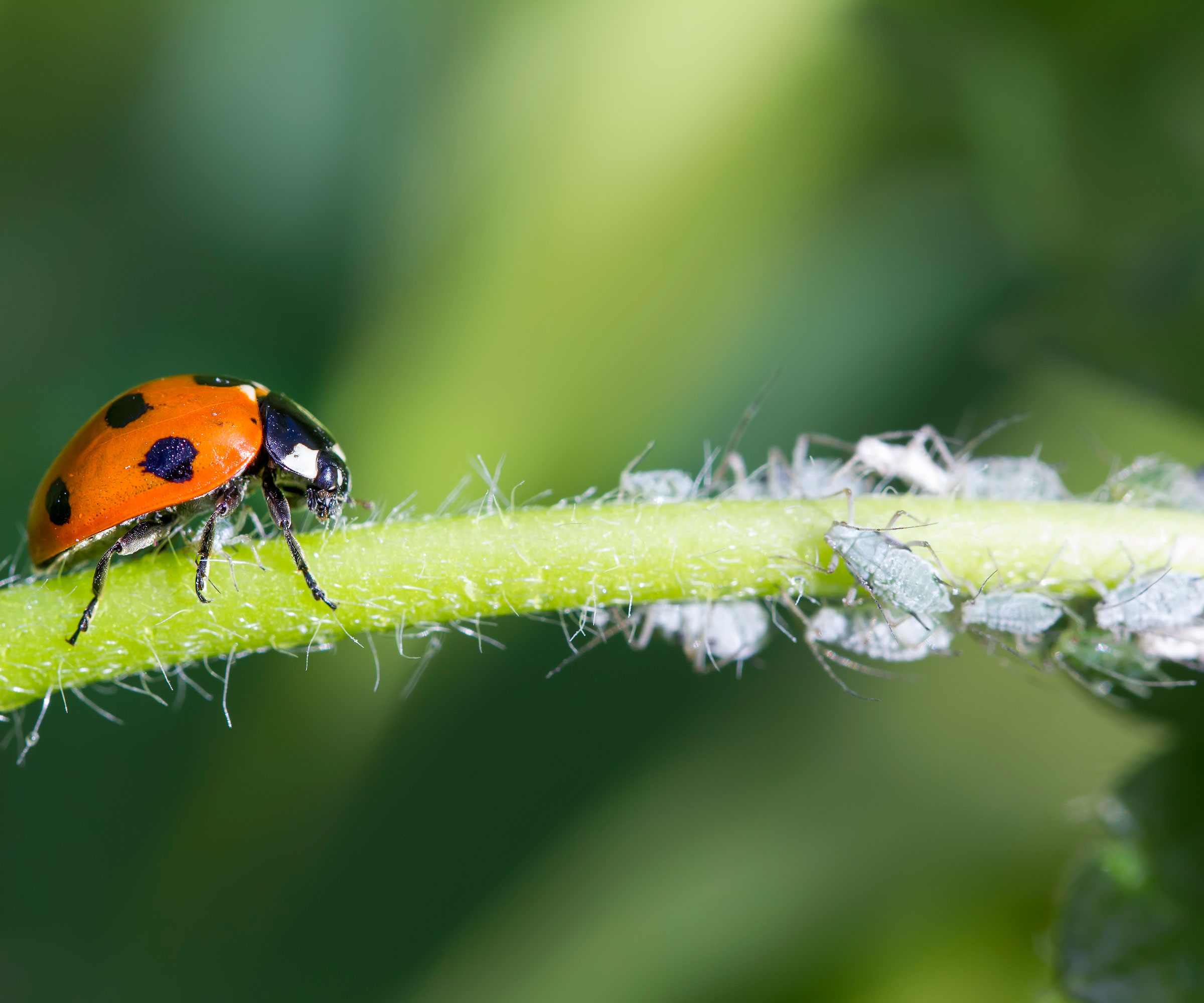
Gardeners are turning to natural predators such as ladybirds to keep on top of garden pests
Since the Coronavirus pandemic there has been a surge in new gardeners, and many of them are more happy to break with tradition and try new methods that chime with working with nature and the climate.
The use of natural methods has come to the fore and people are embracing a more relaxed and nature-friendly approach to gardening, welcoming in pest predators such as ladybirds and lacewing flies, looking to each other for inspiration and ideas.
It is also becoming widely recognised that gardening is good therapy for mind and body - something Kim is keenly aware of through the courses she runs.
She says: 'Getting outside and getting into the soil is incredibly therapeutic. Through the courses I run I work with all ages and with people with autism and I see the benefits first-hand of working outside, growing, nurturing, having your hands in the soil.
'There is a growing awareness of the benefits of a more free-spirited approach and if we can create a space that’s alive with wildlife, it takes gardening to a whole new level of enjoyment. Then we benefit, the garden benefits and our wider environment and community benefits.'
Kim adds: 'I wrote The Climate Change Resilient Vegetable Garden to help people garden successfully at a time when there is so much bad stuff going on with the climate and the world in general.
'This book is for people living everywhere, whatever hardiness zone you garden in. It is a sort of self-help manual offering on the ground solutions - some people have said it’s like having an upbeat friend by their side when they are gardening and I think that’s a lovely analogy.'
Even little adaptations can boost your garden's climate resilience and help you grow better crops and flowers. Installing water butts to harvest rain water and watering your yard more sustainably is an easy place to start.
You can also make your backyard attractive to birds and other wildlife, many of which will help in your battle against pests.
The Climate Change Resilient Vegetable Garden - How to Grow Food in a Changing Climate is published in the US by Quarto Books and costs $28.99.
Sign up to the Homes & Gardens newsletter
Design expertise in your inbox – from inspiring decorating ideas and beautiful celebrity homes to practical gardening advice and shopping round-ups.

Ruth is a Contributing Editor for Homes & Gardens, and formerly Gardening Editor of Amateur Gardening magazine. She is horticulturally trained, with a qualification from the Royal Horticultural Society. Her work for Amateur Gardening, the world's oldest weekly gardening publication, involved matching gardening tasks with each season, covering everything from sowing and planting, to pruning, taking cuttings, dealing with pests and diseases and keeping houseplants healthy. She is an expert in ornamental plants and edible crops, and everything she writes about and photographs is in her own garden, that has been a work in progress since her family moved there in 2012.
-
 How to grow crepe myrtle in pots – and transform even the smallest of yards with dazzling flowers this summer
How to grow crepe myrtle in pots – and transform even the smallest of yards with dazzling flowers this summerGrowing crepe myrtles in pots will inject splashes of brilliant color into your outside space
By Thomas Rutter Published
-
 I've spent over 200 hours testing vacuums and swear by my two Dysons – this is how I properly clean a Dyson vacuum filter for longer-lasting appliances
I've spent over 200 hours testing vacuums and swear by my two Dysons – this is how I properly clean a Dyson vacuum filter for longer-lasting appliancesYour Dyson vacuum will last much longer and clean at its best
By Dan Fauzi Published